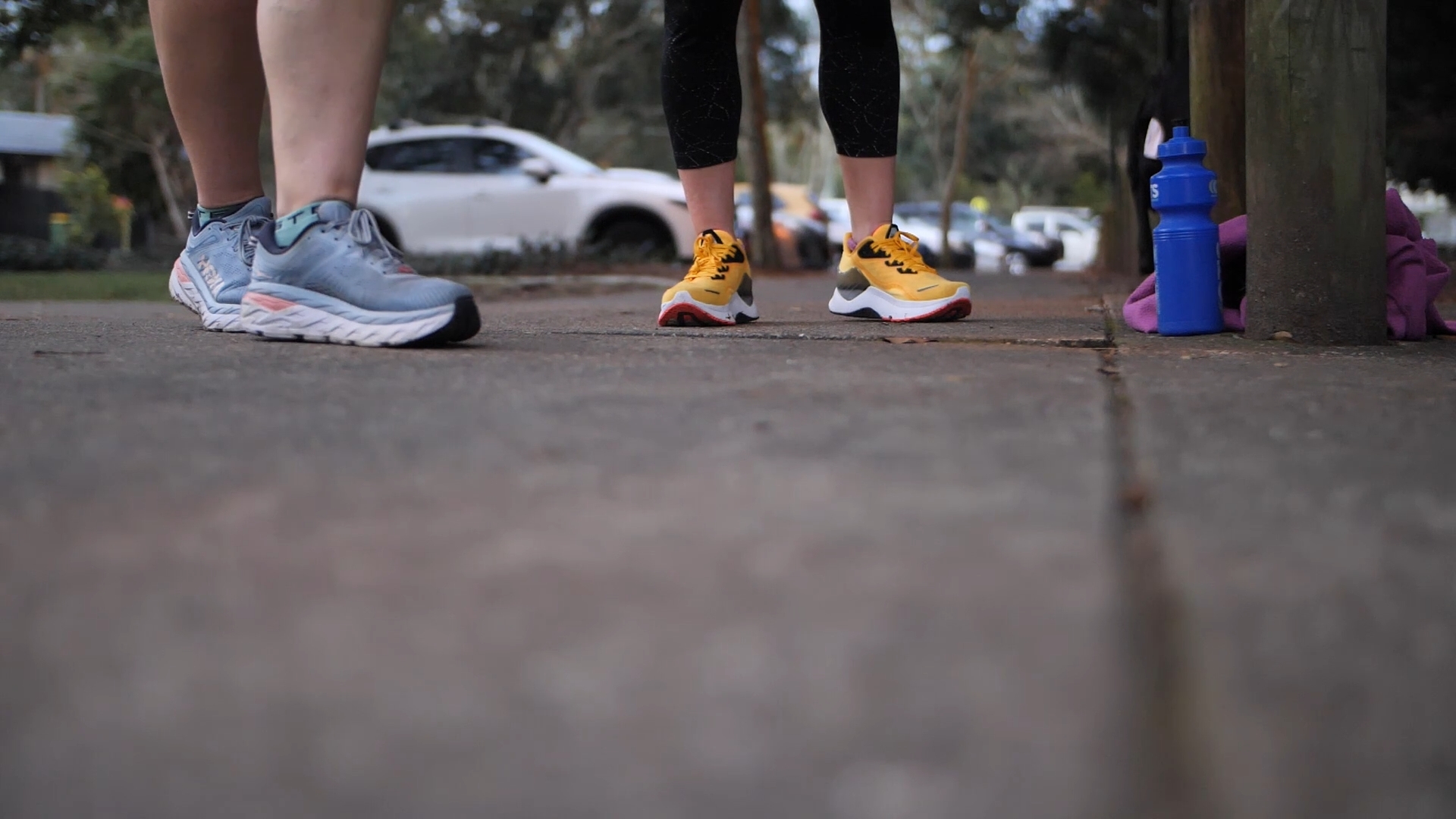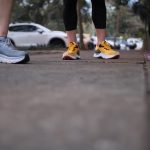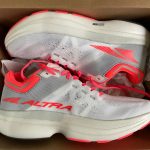
Whether you’re training for a marathon or just want to stay in shape, you’ll need a dependable pair of running shoes.
Running in old shoes can harm your posture and gait, potentially causing problems later on.
We all know it can be difficult to give up your beloved pair of running shoes (just look at my shoe cupboard :-)). But when they become more harmful than helpful, it’s time to invest in a new pair and donate your old ones or let them become gardening shoes.
So how long do running shoes last?
The answer, as with many things in life, is that it depends.
The main factor that determines how long a pair of running shoes lasts is the amount of kilometres they do. If you are a casual runner who logs 10-20km per week, then your shoes will probably last longer than if you are training for a marathon and running 50km or more each week. As a general rule of thumb, shoes last 400-700km.
That said, distance isn’t everything.
There are other factors that influence the lifespan of your running shoes. Think about the type of surface your run on. Are you a little person or a bigger person? Are you a heavy foot striker or do you run with your feet barely touching the ground?
5 signs you need a new pair of running shoes
1. The soles of your shoes are worn.
As we said, running shoes will last anywhere between 400-700km. Keep an eye on the sole of your shoes. How are they looking? If you run on the road and are a bit of a scuffer or have a heavy foot strike your soles will wear out earlier than someone who is light on their feet and runs on the trails or grass.
In general, though, it’s wise to replace your running shoes every 500km or so to ensure optimal performance and prevent injuries. Many fitness apps allow you to track your gear so when you get the new pair of shoes enter the date and the app will do the maths for you.
2. You’re getting blisters on your heels or toes.
Everyone who runs knows that blisters can quickly ruin an otherwise pleasant experience. Blisters are caused by friction, and they often occur on the heels or toes where the skin rubs against the inside of the shoe. If you are regularly getting blisters in your old running shoes, it’s time to invest in a new pair.
Look for shoes with a softer fabric lining that will reduce friction and help to prevent blisters. Be sure to choose a shoe that’s not too tight but also not too loose. A loose shoe can also cause friction and lead to blisters, so it is important to find a pair that strikes the right balance.
In addition, pay attention to your socks. Ask your running friends for their recommendations and then shop around for socks that work for you.
3. Your shoes feel uncomfortable, even after you’ve broken them in.
Remember, it’s important to choose a shoe that fits well from the start. If a shoe feels uncomfortable when you first try it on, ditch it and try another because it’s highly unlikely it will get better once you’re running. Don’t try to “make do” with a pair of shoes that are too small or too big in the hope that they will eventually stretch to fit. Not only will this likely be unsuccessful, but it can also lead to foot problems down the road.
Once you’ve found a comfortable pair in store it’s time to break them in in the real world. This can be a bit of an adjustment, but it shouldn’t be painful. A good rule of thumb is that if a they’re uncomfortable after 50km, they will still be uncomfortable after 150km.
4. You’re getting shin splints or other injuries more often than usual.
If you find yourself more frequently dealing with nagging injuries such as shin splints, it may be time to look at your shoes. Old running shoes can lose their shock-absorbing ability over time, which can put extra stress on your joints and lead to injuries.
If you’ve been dealing with more injuries than usual, it may be time for a new pair of shoes with updated technology that can help protect your feet. Oh, and also have a chat with a professional such as a physiotherapist to rule out any other causes.
5. Sore feet.
If you find that your feet are consistently sore after running, it may be a sign that your shoes need to be replaced. As shoes get old, they lose their cushioning and support, which can lead to pain in the feet and legs. If you’ve been using the same pair of shoes for a while and your feet are starting to hurt, it’s probably time to invest in a new pair.
When it comes to running shoes, there is no one-size-fits-all solution.
The best way to find a shoe that works for you is to experiment with different brands and models until you find shoes that feel comfortable and provide the support you need. And don’t think you have to stop at one pair!
Having a couple of pairs on the go at once is recommended as different shoes distribute the impact forces from running differently thereby helping to reduce injury risk. So think road shoes, trail shoes, long run shoes, speed shoes, blue shoes, red shoes, pink shoes…
Where to from here?
So if you’re a runner, pay attention to your shoes. Wearing the wrong shoes can lead to injuries, discomfort, and reduced performance.
Ultimately, the best way to know when to replace your running shoes is to pay attention to how they feel. If you start to experience more aches and pains than usual, or if your shoes feel unusually flat, it could be time to go shopping!
Here’s to happy and healthy feet!

Condy & Sandi Canuto
Your Everyday Runners








